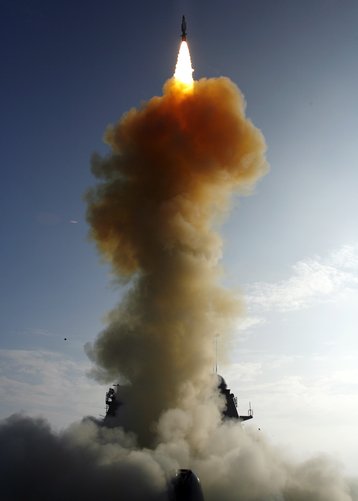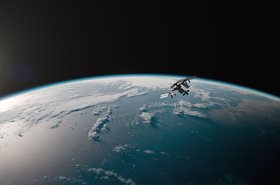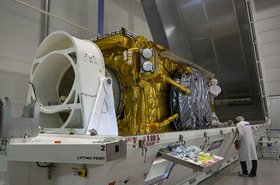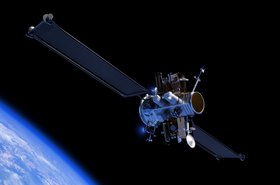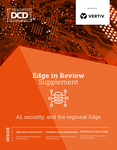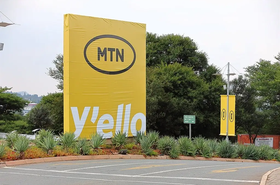Russia’s 2021 antisatellite weapon test is creating a huge number of near-misses between space debris and active satellites.
The satellite was destroyed by a surface-launched ASAT missile in November, creating a debris cloud eventually thought to be made up of 1,500 pieces.
SpaceNews reports, according to space situational awareness company COMSPOC, that the November test is causing so-called “conjunction squalls” of thousands of close approaches, or conjunctions, with satellites over just a few days.
“In the first week of April, in that week alone, there will be 40,000 conjunctions that we predict purely from that one event,” said Travis Langster, vice president and general manager of COMSPOC, during a panel at the 24th annual FAA Commercial Space Transportation Conference Feb. 17.
November saw Russia destroy the defunct Cosmos-1408 satellite, which was previously orbiting at an altitude of approximately 485 kilometers
According to COMSPOC, as the debris orbits precess, they overlap the orbits of remote sensing satellites going in the opposite direction.
“When they sync up, you have the perfect storm: they’re in the same orbit plane but counter-rotating, crossing each other twice an orbit, again and again,” said Dan Oltrogge, director of integrated operations and research at COMSPOC. Those squalls last for several days until the orbits precess out of sync.
The company said it had noticed thousands of conjunctions – approaches within 10 kilometers – in January as the debris cloud passed by a series of satellites operated by Planet. It is predicting a peak of 14,000 a day in April and another “conjunction squalls” six months later. Other companies including SpaceX’s Starlink constellation are likely to see a large increase in conjunction alerts as well.
Oltrogge warned that the conjunction squalls may overwhelm space situational awareness (SSA) systems and make it difficult for operators to identify other potential collisions. “The SSA systems, legacy, and commercial, are all going to get hammered by this,” he said. “If you want to find a needle in a haystack, get rid of the hay. This is adding a lot of hay.”
Cosmos 1408 was a Soviet ELINT (Electronic and Signals Intelligence) satellite launched in 1982 and had a mass of 2,200kg. The Russian Military acknowledged the ASAT test: "On November 15, the Defense Ministry of Russia successfully conducted a test, in which the Russian defunct Tselina-D satellite in orbit since 1982 was struck," it said in a statement.
Despite rebuke from the US government and others, Russia said the test and subsequent debris "did not and will not pose any threat to orbital stations, satellites and space activity.”
COMSPC said the US Defense Meteorological Satellite Program weather satellite DMSP 5D-3 F18 (USA 210) was the satellite most at-risk following the original test – along with several other DMSP machines – but that risk will reduce as debris de-orbits. The company said the bulk is expected to de-orbit within three years.
Last month the Space Debris Monitoring and Application Center of the China National Space Administration (CNSA) issued a warning of an “extremely dangerous” close encounter between the Tsinghua Science satellite and one of the pieces of debris created by the ASAT test.
As Earth’s atmosphere becomes increasingly crowded with new satellites, such weapon demonstrations cause increased risks for operators that can last for decades.
Space traffic causing road rage
Even beyond weapons use, the increased number of satellites is posing issues for space agencies and operators. A number of companies and agencies replied to the Federal Communications Commission (FCC) in response to SpaceX’s proposal for a second-generation Starlink constellation with 30,000 satellites, saying the plans could increase collision risk.
“With the increase in large constellation proposals to the FCC, NASA has concerns with the potential for a significant increase in the frequency of conjunction events and possible impacts to NASA’s science and human spaceflight missions,” read NASA’s response. “NASA wants to ensure that the deployment of the Starlink Gen 2 system is conducted prudently, in a manner that supports spaceflight safety and the long-term sustainability of the space environment.”
NASA also warned such a large fleet could impact launch windows for space missions as well as ground-based astronomy.
Companies including Amazon (via its Kuiper subsidiary), ViaSat, Kepler Communications, OneWeb, and its investor EchoStar wrote letters against the proposals. Starlink’s constellation already outnumbers that of all its rivals, and would grow its fleet by a factor of ten.
“An NGSO (non-geostationary orbital) constellation of this size and complexity presents a unique risk to other systems through its potential to (i) undermine spectrum access by other NGSO FSS (fixed-satellite service) systems in the Ku- and Ka-bands, and (ii) negatively impact the orbital environment by increasing the collision risk for all operators— including SpaceX—operating in and traversing through low Earth orbit,” OneWeb said.
SES accused SpaceX of “taking a “ready, fire, aim” approach to its second-generation system.”

